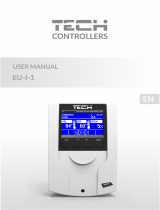Table of Contents
TABLE OF CONTENTS ....................................................................................... 2
FOREWORD 5
SECTION 1: SAFETY PRECAUTIONS................................................................. 9
1.1 WARNINGS & CAUTIONS ....................................................................................................9
1.2 EMERGENCY SHUTDOWN ...............................................................................................10
1.3 PROLONGED SHUTDOWN ...............................................................................................10
1.4 IMPORTANT – FOR MASSACHUSETTS INSTALLATIONS ...............................................11
SECTION 2: INSTALLATION .......................................................................... 13
2.1 INTRODUCTION.................................................................................................................13
2.2 RECEIVING THE UNIT .......................................................................................................13
2.3 UNPACKING .......................................................................................................................13
2.4 SITE PREPARATION .........................................................................................................14
2.4.1 Installation Clearances .............................................................................................................. 14
2.4.2 Setting the Unit ......................................................................................................................... 17
2.4.3 Housekeeping Pad Requirements ............................................................................................. 20
2.5 LIFTING PROVISIONS .......................................................................................................21
2.5.1 BMK750 – 1000 Lifting Provisions .............................................................................................. 21
2.5.2 BMK1500 – 5000N Lifting Provisions ......................................................................................... 22
2.5.3 BMK5000 & 6000 Lifting Provisions ........................................................................................... 22
2.6 SUPPLY AND RETURN PIPING .........................................................................................23
2.6.1 BMK750 – 1000 Supply and Return Piping ................................................................................. 23
2.6.2 BMK1500 – 5000N Supply and Return Piping ............................................................................. 23
2.6.3 BMK5000 – 6000 Supply and Return Piping ............................................................................... 25
2.6.4 Dual Inlet Return Piping ............................................................................................................. 25
2.7 PRESSURE RELIEF VALVE INSTALLATION ....................................................................26
2.8 CONDENSATE DRAIN AND PIPING ..................................................................................27
2.9 GAS SUPPLY PIPING ........................................................................................................29
2.9.1 Gas Supply Specifications .......................................................................................................... 29
2.9.2 External Gas Supply Regulator ................................................................................................... 29
2.9.3 Manual Gas Shutoff Valve ......................................................................................................... 33
2.10 AC ELECTRICAL POWER WIRING ..................................................................................33
2.10.1 Electrical Power Requirements ................................................................................................ 33
2.10.2 Power Panel Locations............................................................................................................. 34
2.10.3 Electrical Power Panel Internal Components ........................................................................... 35
2.11 FIELD CONTROL WIRING – I/O BOARD .........................................................................36
2.11.1 I/O Board Connections ............................................................................................................ 37
2.12 FLUE GAS VENT INSTALLATION ....................................................................................40
2.12.1 MASSACHUSETTS INSTALLATIONS ........................................................................................... 41
2.13 COMBUSTION AIR ...........................................................................................................41
2.13.1 DUCTED COMBUSTION AIR ...................................................................................................... 41
2.14 BST SEQUENCING ISOLATION VALVE INSTALLATION ................................................42
2.15 BOILER PUMP RELAY .....................................................................................................44
2.16 NEXT STEPS ....................................................................................................................45























